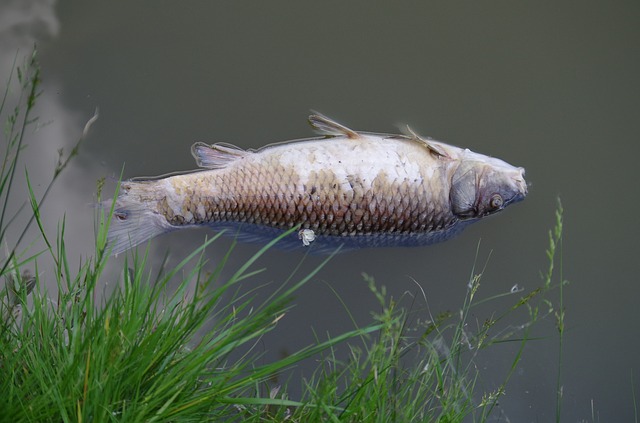The Touws River is being carefully monitored after a number of dead fish were found in the area. The first cases were reported in mid-August, and although the number of fish fatalities has now dropped significantly, South African National Parks (SANParks) has noted that the deaths were restricted only to the lower section of the estuary.
According to the organisation, it seems the die-off was shortlived as the number of deaths has lowered significantly since August 20. Water quality testing was conducted and the affected fish were caught, with SANParks intervening to take various blood and tissue samples. Superficial examinations indicate that both fungal and bacterial infections were present.
“Fortunately, the infections do not appear to be flesh-eating,” Garden Route National Park spokesperson Nandi Mgwadlamba said in a statement. “The water quality results are well within the parameters that would be expected during the closed phase of the Touws River estuary and do not exceed any thresholds that would be detrimental to estuarine fish species. There is also no indication of any sewage or pollution spill. SANParks will continue to monitor the situation and will provide updates as they become available. On a positive note, during the week it was also observed that there appeared to be a healthy population of juvenile estuarine fish that did not show signs of fungal or bacterial lesions.”
SANParks has advised the public not to eat any fish that are abnormal-looking, or have any lesions on their skin – especially if they are from the Touws River area.
Meanwhile, authorities in Knysna have rolled up sleeves to tackle sources of pollution.
On the August 30, a team including the Municipal Manager of the local Knysna Municipality, visited potential pollution hotspot areas in the Bongani catchment, Bigai catchment and CBD to discuss remedial actions. They noted illegal access routes and dumping at various spots in Knysna as a concern. The significance of this action is to clamp down on all pollution points and protect the Knysna estuary at all costs.
Positive, proactive engagements are underway by various stakeholders forming part of the Knysna Authorities Pollution Committee. The Waste Water Treatment Works (WWTW) is testing for various chemicals in the estuary, including ammonia, PH level, nitrates, suspended solids as well as chlorine.
Park Manager for Knysna, Megan Taplin says: “High readings of ammonia are a concern to SANParks for the survival of both plant and animal life in the estuary.”
“We are working with our partners to do more than just sample for ecoli in the Knysna estuary but monitor all potential polluters. Our partnerships with the Municipality allow monitoring of solid waste and systems leading to the Waste Water Treatment Works. Oil and grease influx to the WWTW and sewer system is also being monitored by the municipality,” she adds.
There is recent evidence of high loads of oil entering the system and ending up at the WWTW. Authorities will renew monitoring and investigation efforts to find the source of the oil along the networks and will soon find and fine the culprits.
A positive move is the number of interventions planned for the estuary, which include a freshwater specialist who will be appointed by the Municipality. The specialist will assess the Bongani river system from source to sea including the state of the wetlands in the area and suggest rehabilitation measures for the Bongani catchment. This will assist to address pollution in the system from source to estuary.
There are also numerous interventions to keep solid waste away from the estuary including planned awareness campaigns, regular clean-ups and the rollout of cargo nets to other culverts. A pilot launch of the net was initiated at the culvert on Vigilance Drive last year. SANParks and KM will enter into a Service Level Agreement where SANParks teams will clean the nets regularly. In addition, 50 ladies employed by the Knysna Municipality pick up litter further up the catchment on a daily basis.
Picture: Pixabay

